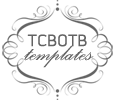My
teaching philosophy is based off of one simple statement......." I simply want to make a difference in the world." Making a difference includes
many aspects however, I have discovered that teaching is the way I want to
influence people for the better and eventually make a difference in the world.
My love for learning has always been strong and continues to grow stronger
every day. I am grateful to have grown up loving school for the endless
amount of knowledge that it offers. I hope I can motivate future students
to look at learning the way I do, and understand that knowledge is power! My philosophy of teaching is to
enable, enlighten, and encourage. It is important to me to instill a
sense of self worth and potential in every one of the students I will be
teaching. I take pride in my schooling and career goals. I am very
passionate about teaching and the benefits that come with it. I will not
only get the chance to teach and serve others, but I will also be learning
right along with my students. I believe that as a teacher I will be given the
opportunity to influence for good the lives of hundreds of children and
families. In my future classroom I
plan to teach my students the relationship between classroom learning and real
life learning. Education
is about inspiring one’s mind not filling their head with information. I will
show them how the skills they learn in my classroom can be implemented outside
of the classroom. I will be sure to make every lesson relatable to each
student so they can interpret in a way that they can fully understand. I
will strive to help them understand that observing is one of the biggest
teaching tools to possess. I will explain that observing teaches us to
look outside the social norm and standard ways of learning. I hope
through implementing my personal philosophy on teaching that my
students will learn how to continue educating themselves
throughout their lives and work together to make a difference in the
world.
Blogging
Resources
1. Teaching Blog Addict
2. Teacher Blogging Basics
3. A Creative Life



















